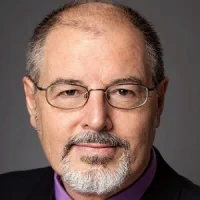Health IT leaders have expressed varying levels of concern over President Donald Trump's recent immigration ban and its impact on the workforce moving forward. They say the policy could limit the talent pool that the industry draws from.
See Also:Trump Wins Presidency: U.S. Healthcare Leaders Forced to Rethink Future
Hiring of IT employees has a global reach and IT organisations leverage services throughout the international community, according to John Halamka, MD, CIO of Beth Israel Deaconess Medical Center in Boston and dean for technology at Harvard Medical School.
“The only way for IT organisations to succeed is to find the best talent regardless of national origin, religion, race and ethnicity, creed, gender identity [or] sexual orientation,” Dr. Halamka said. "At this point in history, the economy is truly global. Denying that reality is an attempt to resurrect an era that no longer exists.”
President Trump's executive order temporarily banning travel from seven predominantly Muslim countries prompted backlash from several of the country’s largest tech giants, including Microsoft, Google, Apple, Facebook and Netflix. A report from Reuters said that a group of technology companies was planning to file an amicus brief supporting a lawsuit challenging the immigration ban.
In 2016, a Census Report stated that 24 percent of the U.S. IT workforce was made up of foreign-born workers, compared to 17 percent employed throughout all industries. About 40 percent of foreign-born IT employees worked in software development, applications and systems software, while 28 percent worked in IT research and 25 percent worked as computer programmers.
There's no official data as to the number of foreign-born workers in the health IT industry specifically, let alone numbers from the seven countries included in the ban. However, health IT leaders are of the opinion that the ban could directly impact the talent pool that the industry draws from.
Following the issuance of the temporary immigration ban, about 100,000 visas – not 60,000 – had been revoked, according to Justice Department officials.
Trump's order "will definitely hurt the organisations and businesses that employ people from these countries ... When they make it harder for them to come, then they will not come,” said Niam Yaraghi, a fellow at the Center for Technology Innovation at the Brookings Institution. Yaraghi is a green card holder, but entered the U.S. from Iran in 2010 on student visa to complete his doctorate in management science and systems at the State University of New York at Buffalo.
Although it's unclear how the ban would impact recruitment of foreign workers going forward, healthcare is already facing a shortage of IT employees that can help push the industry into the digital age. According to a 2014 HIMSS survey, 56 percent of healthcare provider organisations hired between one and 10 full-time IT employees, and 20 percent hired 20 or more. In addition, 92 percent of healthcare providers reported that their organisation faced staffing barriers, and 69 percent of those respondents said the lack of a qualified talent pool was their biggest challenge.
“In general, in the world of health IT, there just isn’t enough bandwidth right now to ensure we get all aspects of it right in order to improve the healthcare system,” said Hardeep Singh, MD, chief of the health policy, quality and informatics program at Houston Veterans Affairs Health Services Research Center of Innovation and an associate professor at the Baylor College of Medicine. “Remember, we just implemented these systems and are still learning how to optimise.”
Source: FierceHealthcare
Image Credit: Pixabay
Latest Articles
Workforce, health IT, Donald Trump, Immigration ban
Health IT leaders have expressed varying levels of concern over President Donald Trump's recent immigration ban and its impact on the workforce moving forward. They say the policy could limit the talent pool that the industry draws from.










